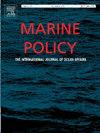Enhancing FAO aquaculture data accuracy: A data validation approach using Egypt, a key producer, as a case study
IF 3.7
2区 社会学
Q2 ENVIRONMENTAL STUDIES
引用次数: 0
Abstract
The FAO plays a unique role in collecting, validating, and reporting global aquaculture production statistics, which are essential for tracking trends in the sector. Nonetheless, the reliance of these statistics on data provided by member countries—which continues to raise questions about their reliability—has prompted the FAO to welcome research collaboration to overcome this challenge. In response, this study examines Egypt—a key producer—as a case study and provides a comprehensive comparative assessment of the aquaculture statistics reported by the FAO against survey-based field data, employing a data validation approach that incorporates input–output analysis. The findings reveal significant discrepancies, underscoring the importance of robust data validation. Official aquaculture production figures were overstated by 61 %, with inflated estimates for earthen pond facilities (44 % in freshwater/brackish water farms and 51 % in marine farms) and fish cages (628 %). The primary species affected by these discrepancies were tilapia (36 %), mullets (82 %), carps (569 %), and marine species (177 %). Furthermore, fry were not registered in official data for 97 % of tilapia, 96 % of mullets, and 89 % of marine species, respectively. Additionally, no official data were available on employment—estimated at 203 thousand workers—or on aquafeed, which was estimated at 1.1 million tonnes. These gaps highlight critical weaknesses in both FAO’s validation mechanisms and national statistical systems, thereby undermining the reliability of related policies. Expanding the implementation of this comparative data validation approach would enhance the accuracy of FAO statistics, strengthen evidence-based decision-making, and ultimately support the sustainable growth of global aquaculture.
提高粮农组织水产养殖数据准确性:以主要生产国埃及为案例研究的数据验证方法
粮农组织在收集、核实和报告全球水产养殖生产统计数据方面发挥着独特的作用,这些统计数据对于跟踪该部门的趋势至关重要。尽管如此,这些统计数据依赖于成员国提供的数据——这继续引起人们对其可靠性的质疑——促使粮农组织欢迎研究合作来克服这一挑战。为此,本研究以主要生产国埃及为案例,采用结合投入产出分析的数据验证方法,对粮农组织报告的水产养殖统计数据与基于调查的实地数据进行了全面的比较评估。研究结果揭示了显著的差异,强调了稳健数据验证的重要性。官方水产养殖产量数据被夸大了61 %,泥塘设施(淡水/咸淡水养殖场44 %,海水养殖场51 %)和网箱(628 %)的估计被夸大了。受这些差异影响的主要物种是罗非鱼(36% %)、鲻鱼(82 %)、鲤鱼(569 %)和海洋物种(177 %)。此外,97% %的罗非鱼、96% %的鲻鱼和89% %的海洋物种的鱼苗未在官方数据中登记。此外,没有关于就业(估计为20.3万工人)或水产饲料(估计为110万吨)的官方数据。这些差距突出了粮农组织验证机制和国家统计系统的重大弱点,从而破坏了相关政策的可靠性。扩大这种比较数据验证方法的实施将提高粮农组织统计数据的准确性,加强基于证据的决策,并最终支持全球水产养殖的可持续增长。
本文章由计算机程序翻译,如有差异,请以英文原文为准。
求助全文
约1分钟内获得全文
求助全文
来源期刊

Marine Policy
Multiple-
CiteScore
7.60
自引率
13.20%
发文量
428
期刊介绍:
Marine Policy is the leading journal of ocean policy studies. It offers researchers, analysts and policy makers a unique combination of analyses in the principal social science disciplines relevant to the formulation of marine policy. Major articles are contributed by specialists in marine affairs, including marine economists and marine resource managers, political scientists, marine scientists, international lawyers, geographers and anthropologists. Drawing on their expertise and research, the journal covers: international, regional and national marine policies; institutional arrangements for the management and regulation of marine activities, including fisheries and shipping; conflict resolution; marine pollution and environment; conservation and use of marine resources. Regular features of Marine Policy include research reports, conference reports and reports on current developments to keep readers up-to-date with the latest developments and research in ocean affairs.
 求助内容:
求助内容: 应助结果提醒方式:
应助结果提醒方式:


